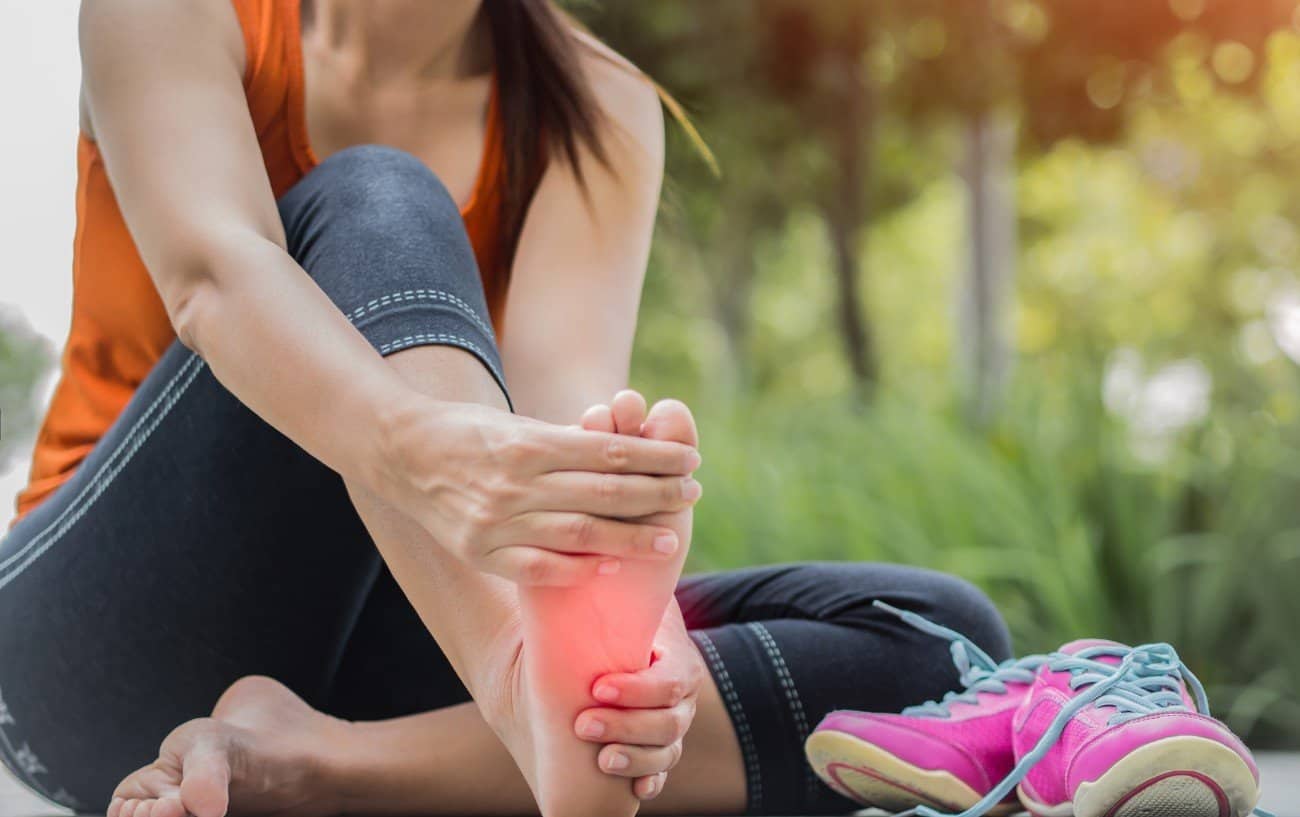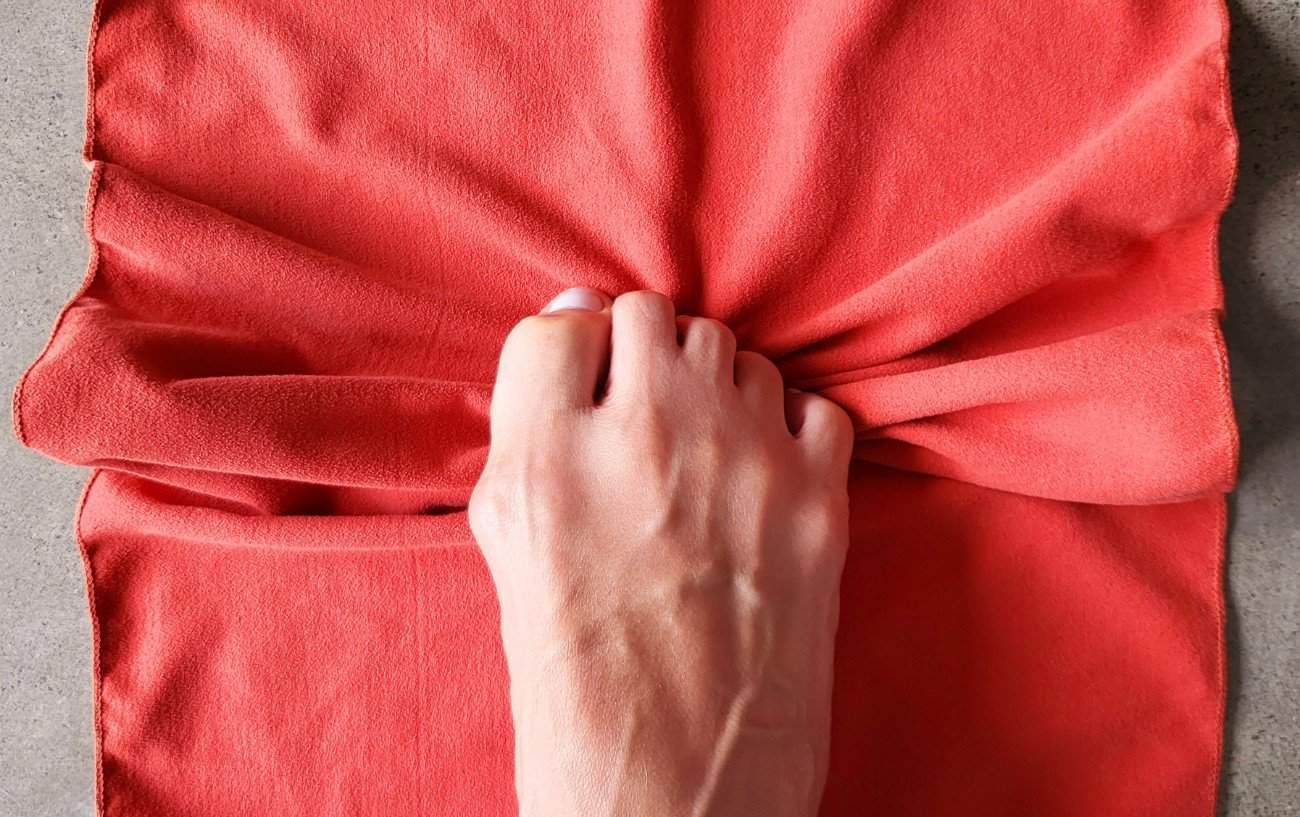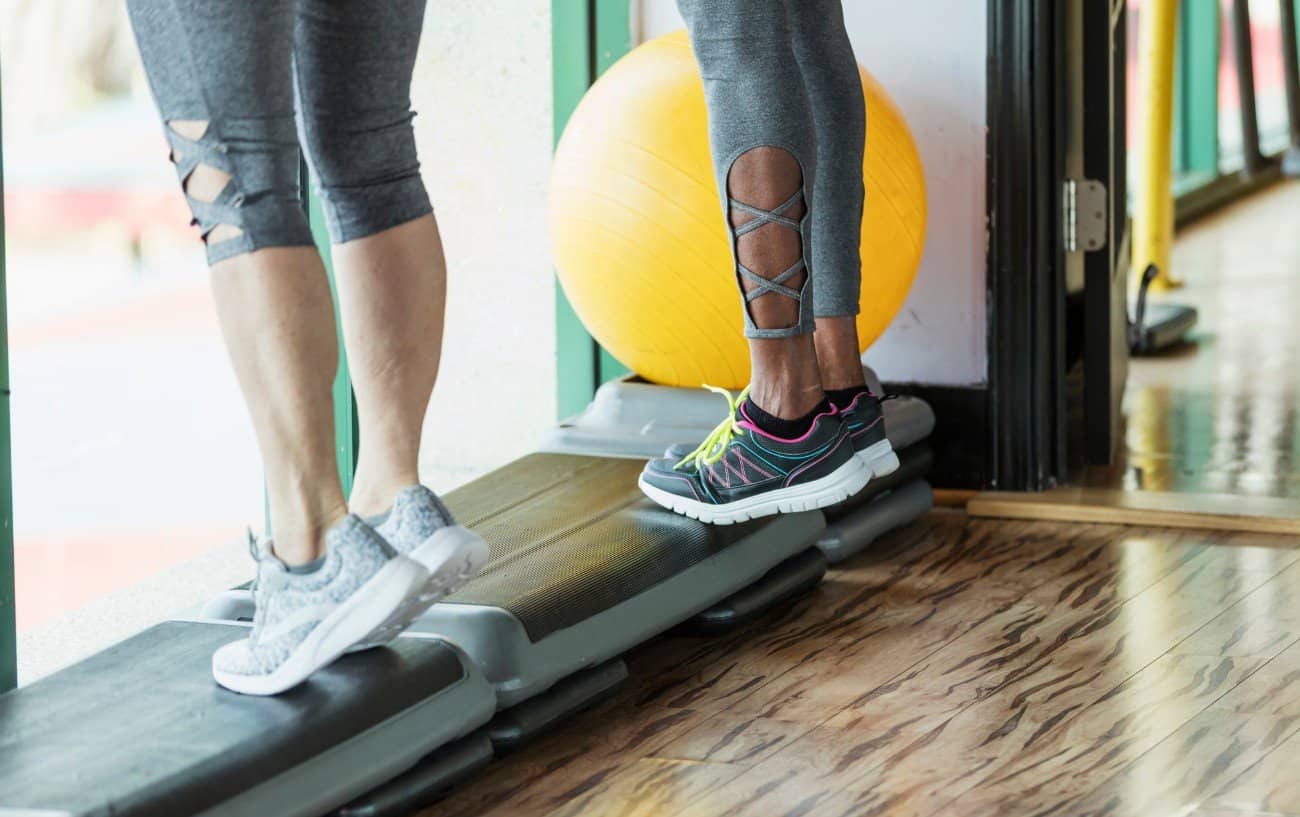Strength training workouts for runners often focus on the major muscle groups in the upper body and lower body such as the quads, hamstrings, glutes, calf muscles, shoulders, arms, back, and core muscles.
While strengthening the lower body muscles promotes optimal biomechanics for running, strengthening the foot muscles that support the arch of your foot, maintains healthy plantar fascia tissue, and allows for strong propulsive push-off from the big toe.
In this guide to foot strengthening exercises for runners, we will briefly discuss the anatomy of the foot muscles and anatomical arch,1Arches of the Foot. (n.d.). Physiopedia. https://www.physio-pedia.com/Arches_of_the_Foot the benefits of foot strengthening exercises for runners, and step-by-step instructions for some of the best foot and ankle strengthening exercises for runners.

Are There Muscles In The Feet?
The foot is one of the most complex structures2Manganaro, D., Dollinger, B., Nezwek, T. A., & Sadiq, N. M. (2022). Anatomy, Bony Pelvis and Lower Limb, Foot Joints. PubMed; StatPearls Publishing. https://www.ncbi.nlm.nih.gov/books/NBK536941/#:~:text=The%20foot%20is%20a%20complex in the human body because it is an intricate arrangement of 33 joints, 26 bones, and over a hundred muscles, tendons, and ligaments that work together to absorb impact forces, support your weight, and propel your body forward when you walk and run.
When considering the muscles of the foot, there are two general categories: extrinsic foot muscles and intrinsic foot muscles.
Extrinsic foot muscles attach somewhere in the foot or toes but originate in the lower leg (shin or ankle).
Intrinsic muscles originate and insert in the foot itself, meaning no part of the muscle extends into the ankle or leg.
Together, the intrinsic and extrinsic muscles of the foot help support and control the mediolateral arch of the foot and will help flex and extend the toes.

What Are the Benefits of Foot Exercises for Runners?
According to research,3van Gent, R. N., Siem, D., van Middelkoop, M., van Os, A. G., Bierma-Zeinstra, S. M. A., Koes, B. W., & Taunton, J. E. (2007). Incidence and Determinants of Lower Extremity Running Injuries in Long Distance runners: A Systematic Review. British Journal of Sports Medicine, 41(8), 469–480. https://doi.org/10.1136/bjsm.2006.033548 evaluating the incidence of musculoskeletal injuries in runners, anywhere from 5.7% to 39.3% of runners experience foot injuries.
Moreover, unlike other common running injuries like shin splints and iliotibial band syndrome, which often plague beginners, studies show4van Gent, R. N., Siem, D., van Middelkoop, M., van Os, A. G., Bierma-Zeinstra, S. M. A., Koes, B. W., & Taunton, J. E. (2007). Incidence and Determinants of Lower Extremity Running Injuries in Long Distance runners: A Systematic Review. British Journal of Sports Medicine, 41(8), 469–480. https://doi.org/10.1136/bjsm.2006.033548 that foot injuries are actually more common in experienced runners.
Foot injuries are particularly common, as the feet take the brunt of the impact and are the site of initial landing and ground contact.
When you run, your feet are subjected to forces approximately 2-3 times your bodyweight,5NILSSON, J., & THORSTENSSON, A. (1989). Ground reaction forces at different speeds of human walking and running. Acta Physiologica Scandinavica, 136(2), 217–227. https://doi.org/10.1111/j.1748-1716.1989.tb08655.x and research indicates6Hoeger, W. W. K., Bond, L., Ransdell, L., Shimon, J. M., & Merugu, S. (2008). ONE-MILE STEP COUNT AT WALKING AND RUNNING SPEEDS. ACSM’s Health & Fitness Journal, 12(1), 14–19. https://doi.org/10.1249/01.fit.0000298459.30006.8d runners take approximately 1,400 steps per mile at an 8-minute per mile pace.
Therefore, it’s unsurprising that many runners deal with foot pain after running.
Some common foot injuries in runners are bony in nature, such as metatarsal stress fractures or stress fractures in other bones of the foot.
Others may involve connective tissues, for example, plantar fasciitis7NHS Choices. (2019). Plantar fasciitis. NHS. https://www.nhs.uk/conditions/plantar-fasciitis/ and extensor tendonitis,8Extensor Tendinopathy | NHS Lanarkshire. (n.d.). Retrieved March 5, 2024, from https://www.nhslanarkshire.scot.nhs.uk/services/physiotherapy-msk/extensor-tendinopathy/ and in addition, it is also common for runners to foot pain and foot injuries to foot muscles.
In fact, a recent study9Mako Fukano, Nakazawa, K., Higashihara, A., Takayuki Inami, & Narita, T. (2023). Damage and recovery of the intrinsic and extrinsic foot muscles from running a full marathon. https://doi.org/10.1111/sms.14377 found that marathon running causes muscular damage from overuse to flexor muscles of the foot and can temporarily flatten the arch.
Incorporating strength training exercises for the calf, shin, ankle, and foot muscles can help prevent foot injuries by building strong feet, optimizing biomechanics for running, improving overall foot health, and strengthening the arch for proper running form.
What Are the Best Foot Strengthening Exercises for Runners?
Here are some of the best foot strengthening exercises for runners and best ankle strengthening exercises for runners:

#1: Single-Leg Balance
One of the simplest ankle strengthening exercises for runners is the single leg balance exercise.
This exercise strengthens the small muscles in the lower leg that control the ankle as well as the peroneal muscles and posterior tibial tendon that cross down under the bottom of your foot or along the arch of your foot to help maintain your arch.
- Remove your running shoes.
- Stand on one leg with a relatively straight knee (though not locked out).
- Hold for 30-60 seconds.
Close your eyes to make this foot strengthening exercise more difficult, and progress to balancing on uneven surfaces like a pillow or wobbleboard.

#2: Heel Walking
Heel walks are one of the best ankle and shin strengthening exercises.
Heel walks simply involve lifting your toes up and walking forward on your heels, using the muscles in the anterior compartment (front of your lower leg).
This can potentially help reduce the risk of shin splints and is a great way to prevent imbalances between the calf muscles on the backs of your lower leg and the shin muscles along the front.
- Walk forward on your heels for 20 or 30 meters.
- Then, rest and walk back on your heels.

#3: Toe Walking
Toe walking strengthens the lower leg muscles (calf muscles) and Achilles tendons.
- Press up onto the balls of your feet and walk forward for 20 or 30 meters, contracting your calves.
- Rest and then perform another set of toe walking back to your starting position.

#4: Toe Curls
One of the benefits of foot strengthening exercises for runners is that some of these foot exercises can be performed throughout the day, even while you are at your desk or watching TV.
Toe curls are a great example of an easy exercise to increase foot strength that doesn’t take much mental work or time.
- Remove your shoes and socks.
- Use the small intrinsic muscles of your feet (toe flexors) and along the bottom of your foot to curl your toes in and scrunch your foot (toes towards the heel along the bottom) as if trying to make a fist with your foot.
- Pause and hold the scrunch for 2-3 seconds.
- Relax and repeat for ten repetitions. As your foot strength improves, gradually increase the number of reps per set.
- Repeat on the other foot or do toe curls on both feet simultaneously.

#5: Toe Spreads
Another simple foot strengthening exercise for the intrinsic muscles of the feet is toe spreading.
Toe spreading may help strengthen the abductor hallucis longus, one of the key muscles involved in preventing bunions.
Toe spreads also help prevent tightness in the nerves and vasculature in the ball of your foot, potentially reducing the risk of injury (such as metatarsalgia and Morton’s neuroma).
- Remove your shoes and socks.
- Stand tall with your feet hip-width apart.
- Spread your toes apart as wide as possible trying to see a good amount of space between the big toe and second toe and all of the small toes.
- Pause and hold the spread for 2-3 seconds.
- Relax and repeat for ten reps.

#6: Short Foot Exercise
The short foot exercise, also called foot doming or arch doming, is great for runners with flat feet or prone to plantar fasciitis.
- Remove your shoes and socks.
- Sit in a chair with your feet flat on the floor.
- Raise the arch of your foot by pulling the base of your big toe towards your heel while keeping your heel planted and the base of your big toe on the floor. Think about shortening your foot by drawing the heel and big toe closer together. Do not scrunch your toes.
- Hold for 5 seconds.
- Perform 5-10 reps.

#7: Calf Raises With Big Toe Extension
Performing calf raises with your heels hanging off the step maximizes range of motion.
- Remove your running shoes and socks.
- Raise up onto your toes as high as you can go, pressing all the way through the big toe.
- Then sink down, dropping your heels towards the stair below as deep as possible to get the full range of motion in your ankle.
- Perform 10-20 reps.
Progress to the single-leg calf raise as you get strong

#8: Resistance Band Toe Flexion and Extension
You can use a light resistance band to strengthen the toe flexors and toe extensor muscles.
- Remove your running shoes and socks.
- Sit on the floor with your legs straight and toes pointing up.
- Place a thick rubber band or light resistance band around a table leg or chair leg with the band coming across the top of your toes.
- Pull your toes towards your shin (toe extension).
- Perform three sets of 12 to 20 reps per foot.
- Then hold the band and loop the other side behind your toes on the bottom of your foot.
- Curl your toes against the resistance band as you pull it towards your face.
- Perform three sets of 12 to 20 reps per foot.
Make sure to do a quick warm-up for the lower leg and foot muscles before starting your foot exercises, such as some heel-to-toe walking and ankle circles.
For a complete dynamic warm up check out this next guide:












